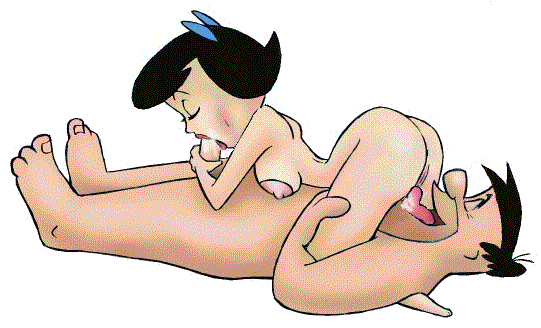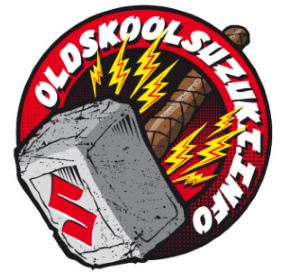-
Posts
5,758 -
Joined
-
Last visited
Content Type
Profiles
Forums
Events
Everything posted by Gixer1460
-
Most OEM installs use gravity drain hence the large bore. If the turbo is mounted high enough -12 would be ok but usually difficult to achieve good fall downwards and stay above oil level. If its low then a small sump / catch tank below outlet and elec. pump scavenge with -6 or -8 drain to crankcase is easier and neater.
-
Try lower fuel pressure first - non pump bike carb floats, only designed for gravity, just don't like pressure. If they still leak at, say, 1psi then its replacement time!
-

cheap pro-boost kit Talk me out of this please.....
Gixer1460 replied to Roger P.'s topic in Forced Induction
Does seem a bargain - All you need to know is if the turbo spins ok and that shaft is stable ie. doesn't have big play (up/down, side to side or in/out) - burnt wheels easily replaced. -
Probable corrosion around the dowels ( i think there are 2) so ACP50 / WD40 penetrating fluid is deffo required. The oil drains have o rings that will probably be hard as rock - they need replacing so application of heat won't hurt to loosen them off! Part #8 = dowels and liable to be stuck around stud #6
-
If the bike starts reliably ie fairly quickly and doesn't grind away, push after push, then a smaller battery will cope as the std alternator will keep up with 'normal running' discharge ie not using grip heaters and heated jackets with sat nav and phone charger plugged in. The regular R6 battery in the tail was a mod from 'back in the day' as it would lie flat!
-
Apart from near 20 years development of lightening / shaving of rotating parts - makes a difference. To OP - the Ah rating is the 'storage' capacity ie. a 10Ah battery will give out 10A for 1 hour. The CCA is the 'Cold Cranking Amps' and is the crucial number for kicking a cold, high compression engine over - more is generally better. Never tried a LiFePO4 type battery but they seem to be proving reliable in small packages.
-
80's and 90's OEM wheels were heavy but strong - roads are hard on wheels! Racing wheels have to be cared for - no kerbing, big wheelies etc and corrosion loves that light alloy. Later 1000 wheels may fit and be lighter but the manufacturers started using bigger dia. spindles that were hollow - strong and light, so that may pose a problem as a 'bolt-on' into older forks?
-
From a m8's experience with a 1216 and FCR41's - unless you are seeking a 'pub bragging rights' big HP number or are racing with lots of WOT running, they are not a happy marriage on the road. They will function, but the low end and mid range will be disappointing. His dyno'd at 160+hp with the FCR's - now gone back to RS36's @ 155hp and monster mid-range! Your choice!
-
Only cos its broken
-
Yep - cheapest, nastiest oil from Tescos or Walmart etc. - but wouldn't use 20w-50 though as too viscous for a GSXR - only 10w-40. Run that for 50 - 100 miles and bin it with filter, then use better. Don't baby the motor either - use some revs but keep load low and you won't glaze the bores. Cheap oil doesn't have the friction reduction / long life additives and as you don't need long life , its perfect.
-
AFR - looks right..... or IS right? Without seeing the dyno graph with AFR plotted, its tricky to advise, but 10-15% is a lot to lose with a jet change - they do go up and down in 2 point changes, not just 5 or 10 points. If it's properly rich, ie. less than 12 : 1 AFR then its not max power - that should be around 13.2 : 1 AFR. Is the ignition system correct and tip top? likewise the valve clearances?
-
Can't see any reason for not sleeving the rods if machining is FOC as an option.
-
Brute force and ignorance usually works! A few mates, steel bars and scaffold tubes with beer rewards after, saves buying / hiring tools for one off jobs.
-
As above but the rear subframe does look out of whack as well. Use the headstock and s/arm pivot faces to locate true centerline then remove tyre so you can check true wheel center to frame centerline and make a judgement of what's going to be possible. A 5.5" rim is usually a squeeze but may require a 520 chain. Otherwise its possible to 'tunnel' the frame to allow chain clearance. Is the slick a Mickey Thompson? - they are usually listed as 7" wide - probably why its offset!
-
Two alternatives - 2 batteries parallel connected for 12v - may not improve the cranking, just allow you to do it for longer OR series connected for 24v starting which will really spin it over! If the latter is chosen, then connect all the bike electrics up to the first battery inc. the starter motor thick cable, but run that to the second battery negative post, then run another thick cable from the + to the starter soli and then soli to starter motor. This way the 2nd battery is only included in the circuit when starter is engaged and is isolated from everything else........ it won't be charged but it only gets used for a few seconds so a plug in charge every few weeks ain't a big drama!
-
CV40's have rep for poor tunability and IMO are too big for even 1216 kitted motors unless for outright power / racing although cv's aren't great in racing applications. 36 / 38mm carbs whether cv or RS flatslides work soooo much better on the road. I have FCR41's on a 1460 GSXR and they are borderline ok with that capacity, tried RS40's but they are a bit 'agricultural' in comparison but a rack of TMR40's would be nice for xmas!
-
Dunno what's wrong - but it ain't right! LOL. I would have thought any ignition should keep up at only 1/2 bar boost but closing the gaps is good advice regardless. Press on - its troubleshooting time - it took me 4 variations of turbo components till mine came good!
-
I had a DJ stage 3 kit in my 36mm CV's with dual pods and never had a problem with wind - went like a cat with Acme rocket up its arse! 13:1 CR is brave on a road bike, mine was about 12.5 ish and pinked like a bastard up hills in the summer! Some dynos tend to tune too lean and so will run rubbish on the road. DJ needles on the richer side of middle groove and DJ 136's in 1 & 4 and 138's in 2 & 3 - mainly due to hotter centre cylinders...... carbs, DIY exhaust 1186 kit = 144hp which was a result as far as I was concerned.
-
Got to say that is an incredibly neat solution. Welding cast alloy is always hit or miss - inclusions or porosity - PITA. Maybe with a little adaptation and addition of some lugs & o-rings it could be made 'bolt-on' ?
- 75 replies
-
- gsx1100
- gsx1100efe
-
(and 1 more)
Tagged with:
-
What is the 'actual' turbo type / reference that has the flange ? - That would help?
-
Get a flange gasket - usually pressed SS to match flange and use as template.
-
Its not 'just' moving the shock top mount. If the shock is the same, then moving it down/forward the suspension will work softer, likewise damping will be less as the rod will move less. Similarly if the shock is more vertical, it will use more of the shock / damper travel so may be harder/stiffer. Both scenarios will / may require shock / spring 're-tuning'. Same when guys change the shock linkages / pick-up points and can't understand why shock is hard when original bike was a lot softer. Even the big OEM's get it wrong as happened with the big K and the ZXR750 in the 90's!
-
Its probably the oil in the feed line and core seeping past the turbo bearings after shut down - its not unknown. A sump will help as will running the drain scavenge pump for 30 secs / a minute after engine off to drain the core and feed line.
-
From El Gringo..... "Any bets on what it makes when it finally gets there? I'll open the bidding with the remains being swept up into a bucket" Open speculation on output and encouraging piss taking! So now making comments is 'gobbing off' - i've justified my comments - you just want to take issue whilst offering nothing constructive but if it keeps you happy - crack on!
-
Sarcasm is wasted on you isn't ! As most on here feature litre + bikes so without knowing thie motor size, a sub 100hp output would be disappointing.


